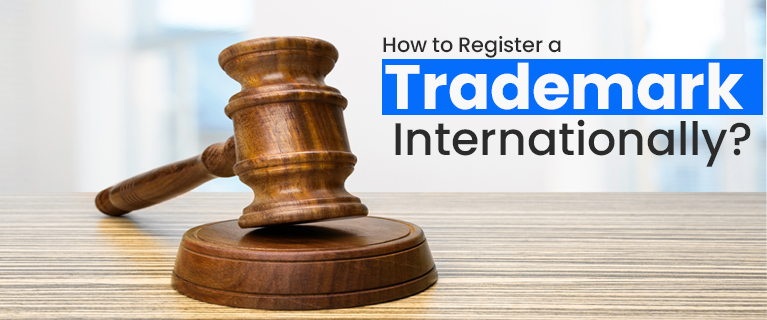In the dynamic world of business, trademarks serve as the cornerstone of a brand’s identity. They encapsulate the essence of a company, differentiating its goods or services from the competition. While trademark registration provides essential protection within a specific territory, businesses with global aspirations must secure international trademark protection. This guide explores the process of international trademark registration, focusing on the Madrid Protocol, its prerequisites, the registration process, and the myriad benefits it offers to businesses.
Understanding the Madrid Protocol:
The Madrid Protocol, a game-changer in international trademark registration since its adoption in 1989, provides a seamless path for businesses eyeing global brand protection. This protocol streamlines the trademark registration process by empowering businesses to file a single application in their home country, known as the office of origin. The beauty of the Madrid Protocol lies in its ability to extend trademark protection effortlessly across member countries within the Madrid Union.
Trademark registration, a crucial step for brand protection, becomes more accessible with the Madrid Protocol. This international agreement eliminates the need for businesses to navigate complex registration procedures in each country individually. Instead, a single application filed through the office of origin triggers a streamlined process, ensuring that trademark protection blankets the diverse markets of the member countries.
With 112 members covering 128 countries, the Madrid Protocol creates an extensive network for global trademark registration. This breadth of coverage is a boon for businesses operating on an international scale, offering a comprehensive framework to safeguard their brands. Simplifying the trademark registration process becomes essential for businesses of all sizes, and the Madrid Protocol addresses this need by providing a user-friendly and cost-effective solution.
For businesses contemplating international expansion, the Madrid Protocol’s approach becomes invaluable. Its 112-member strong network not only reduces administrative complexities but also enhances the accessibility of trademark registration globally. This is especially crucial for businesses engaged in international trade, ensuring that their brands are protected in a multitude of jurisdictions.
Read Also This – Can I Use A Trademark From Another Country
Trademark registration becomes a more efficient and streamlined endeavour, thanks to the protocol’s commitment to simplifying the process. Additionally, the protocol’s provisions facilitate a consistent trademark examination standard among member countries, providing a transparent and predictable environment for businesses navigating international trademark registration.
In summary, the Madrid Protocol emerges as a cornerstone in international trademark law, optimizing global brand protection through a simplified and widely accepted approach. Its extensive membership, user-friendly application process, and commitment to harmonization make it an indispensable tool for businesses prioritizing trademark registration and conducting thorough trademark searches on a global scale.
Evolution of Indian Trademark Law:
India, recognizing the importance of global trademark protection, amended its Trademarks Act in 2010 to align with the Madrid Protocol. This amendment allowed Indian businesses to leverage the protocol for international trademark registration. Notable entities like Micromax have successfully navigated this process, obtaining international protection for their trademarks, such as the iconic ‘MICROMAX.’
Prerequisites for International Trademark Registration:
Embarking on the journey of international trademark registration requires careful consideration of several prerequisites to ensure a smooth and successful process. Let’s delve into each requirement in detail, incorporating relevant keywords for clarity.
1. Domicile or Presence in India:
To initiate international trademark registration, the applicant must have a robust connection to India, either through domicile, Indian nationality, or a genuine business presence in the country. This prerequisite underscores the importance of a solid Indian foundation for businesses looking to expand their trademark protection globally.
2. Existing National Trademark Registration:
A pivotal prerequisite is the possession of a valid national trademark registration in India or an ongoing national trademark application. This serves as the foundational element for initiating the international application process. Having a nationally registered trademark is crucial for businesses aspiring to extend their brand protection beyond borders.
3. Consistency in Goods and Services:
The international application demands meticulous alignment with the goods and services enlisted in the national registration or application. This prerequisite emphasizes the need for coherence and consistency in specifying the scope of trademark protection, ensuring that the international filing accurately reflects the national registration.
4. Selection of Madrid Protocol Member Countries:
Businesses must strategically select one or more member countries of the Madrid Protocol where they intend to secure international trademark protection. This step is critical for navigating the global trademark landscape efficiently. “Madrid Protocol member countries” and “international trademark protection” highlight the strategic decision-making process involved in expanding trademark rights.
By understanding and fulfilling these prerequisites, businesses can lay a solid foundation for a successful international trademark registration journey, optimizing their chances of obtaining comprehensive global brand protection.
Read Also This – Why do you need USA Trademark Registration
International Trademark Registration Process:
Navigating the international trademark registration process involves several crucial steps, each contributing to the comprehensive protection of a brand on a global scale. Let’s explore these steps in detail, incorporating keywords for clarity.
1. Trademark Search:
The process kicks off with a meticulous trademark search utilizing WIPO’s Global Brand Database. This step is essential to identify and mitigate potential conflicts with existing trademarks in the targeted member countries, emphasizing the importance of a thorough search for a smooth registration process.
2. Filing Registration Application:
Using Form MM2(E), businesses initiate the international trademark registration application with the Office of the Registrar of Trademarks in India, serving as the office of origin. This application, a crucial starting point, undergoes verification and is then forwarded to WIPO, laying the groundwork for the global expansion of trademark rights.
3. Examination by WIPO:
WIPO conducts a comprehensive examination of the application to ensure compliance with international trademark regulations. Successfully vetted applications are officially recorded in the International Register and published in the WIPO Gazette of International Trademarks, showcasing the global recognition of the registered trademark.
4. Notification to Member Countries:
WIPO takes the proactive step of notifying each selected member country about the international trademark application. Member countries then examine the application and provide their reports within the designated 12 to 18 months, highlighting the collaborative nature of the international trademark registration process.
5. Opposition Proceedings:
Addressing opposition, if it arises, becomes a focal point, with WIPO overseeing the entire opposition procedure. This step underscores the importance of a well-managed process for resolving conflicts between the applicant and the concerned member country, ensuring a fair and transparent resolution.
6. Grant of International Trademark Registration:
Upon acceptance by member countries, the trademark secures registration for a period of ten years. A statement of the grant is issued, certifying the international registration of the Indian trademark and marking the culmination of a successful international trademark registration journey.
By understanding and navigating each step in this process, businesses can effectively secure and maintain international trademark protection, fortifying their brand presence on a global scale.
Read Also This – How to Register your Business Trademark in Canada
Benefits of International Trademark Registration:
Exploring the advantages of international trademark registration reveals a range of benefits crucial for businesses expanding their reach on a global scale. Let’s delve into each benefit, incorporating relevant keywords for clarity.
1. Legal Protection:
International trademark registration serves as a robust shield, offering legal protection against unauthorized use in foreign countries. This safeguard provides businesses with a solid legal foundation and recourse in the event of infringement, emphasizing the importance of securing trademark rights globally.
2. Business Opportunities:
Trademarks, positioned as valuable intangible assets, unlock diverse revenue streams through licensing agreements with foreign entities. Esteemed brands like Nike and McDonald’s exemplify successful ventures leveraging such opportunities, underlining the revenue potential associated with international trademark registration.
3. Unique Identity and Global Recognition:
Establishing a unique identity on a global scale becomes achievable through international trademark registration. This not only enhances brand recognition but also reinforces exclusivity in the marketplace. Keywords like “global identity” emphasise the broader scope of brand establishment facilitated by international registration.
4. Boost for E-commerce:
E-commerce enterprises experience substantial advantages with international trademark registration. This includes the ability to expand globally, ensuring the availability of products across borders and fostering consumer trust. Keywords like “global availability” highlight the role of trademark registration in boosting e-commerce businesses on an international level.
5. Protection during Import or Export:
International Trademark registration acts as a crucial safeguard during the import or export process. This protection shields trademarks from misuse and empowers businesses to take legal action against infringement, offering a strategic advantage in the increasingly interconnected global marketplace.
By recognizing and leveraging these benefits, businesses can strategically position themselves for success in the international arena, reinforcing their brand presence and capitalizing on the opportunities that arise with comprehensive trademark protection.
In conclusion, international trademark registration under the Madrid Protocol is a strategic move for businesses seeking to expand globally. Beyond legal protection, it opens doors to new opportunities, fortifies brand identity, and safeguards against unauthorized usage. As the business landscape continues to evolve, securing international trademark protection becomes an indispensable step towards achieving sustained success on the world stage.


